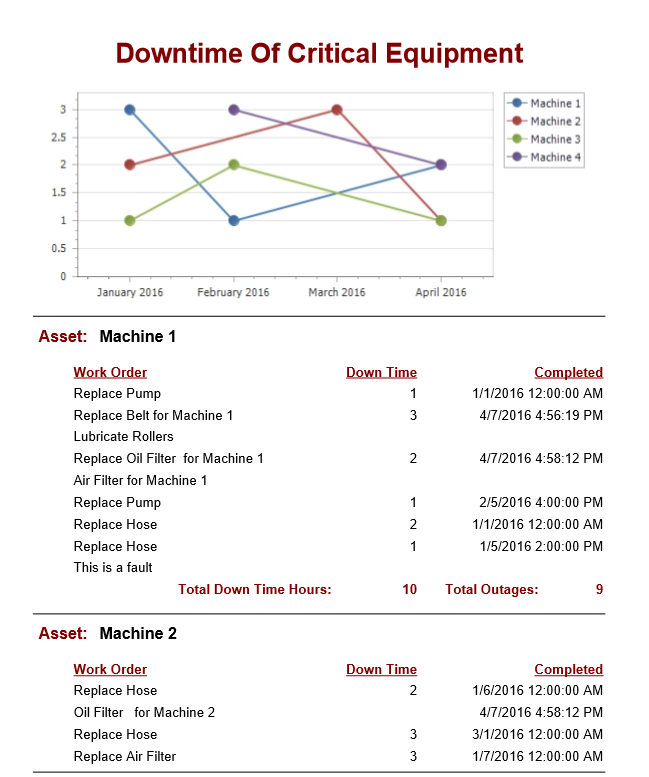 Avoiding equipment breakdowns plays a vital role in boosting productivity and profits. Keeping assets functioning at peak capacity is essential to your maintenance efforts. Are you continually working to balance workloads and equipment scheduling to lessen the possibility of downtime? A modern asset tracking software system should be able to simplify your challenges for optimal asset performance and decrease equipment downtime.
Avoiding equipment breakdowns plays a vital role in boosting productivity and profits. Keeping assets functioning at peak capacity is essential to your maintenance efforts. Are you continually working to balance workloads and equipment scheduling to lessen the possibility of downtime? A modern asset tracking software system should be able to simplify your challenges for optimal asset performance and decrease equipment downtime.
Have you ever noticed that downtime is comprised of multiple times? – notification time, analysis and diagnosis time, repair time, wait time, reassemble time, testing time, and possible inventory wait time. The loss of production time can disrupt plant productivity and put a considerable dent in revenue.
Taking the time to keep equipment in working order is vital to performance, goals, and organizational success. The right asset tracking and reporting provide the information you need to improve your maintenance and production related processes. Whether you’re dealing with equipment failures due to environmental issues, temperature variables, chemicals, overuse, or work order scheduling – preventing them from failure is crucial to reducing downtime.
How does equipment asset tracking software prevent and manage downtime?
Asset tracking software unveils informative data that is essential to improving productivity by reducing equipment downtime.
- With the appropriate placement of sensors on production equipment, real-time data can be captured and recorded. When this data is integrated into work order software, you have a detailed view of your operating conditions and the status of your machinery. This helps you plan maintenance more effectively.
- Equipment downtime reports can detail gaps in your preventative maintenance schedule, to facilitate changes and updates to your existing maintenance system.
- After collecting valuable downtime information over the lifespan of your assets, it becomes easier to determine what steps to take to improve and identify potential problems before an outage happens.
- Downtime is inevitable, however, as equipment data is collected and frequent problems are identified, you are better equipped to resolve them or create detailed resolution procedures that cut the length of downtime.

Optimize downtime patterns by defining and reporting on asset performance and work order status.
- Viewing the condition of your assets and their breakdown history, you can prioritize work orders and schedule planned maintenance to avoid equipment downtime.
- Avoiding equipment downtime means making sure personnel is focused on the most critical items first and that any downtime that happens is isolated to less critical assets.
- The difference between forced and planned repairs is the effect it has on plant productivity and meeting deadlines. Maintenance performance reporting can predict the need for a planned delay, and prevent the unplanned delays that put a halt on productivity.
- Knowing breakdown patterns and repair frequency of your equipment can help you make informed purchasing decisions. For example – would you still buy machine A instead of machine B if you knew machine B outperforms machine A at every turn?
- Asset tracking software measures targets achieved and missed to help you determine possible improvements needed. As production targets aren’t met, you decide what should be done differently and plan preventative maintenance more often to prevent unplanned downtime.
The combination of smart preventative maintenance, efficient asset tracking, work order prioritization, and better maintenance scheduling will help you find the right balance between preventative and ongoing maintenance, making it easier to prevent downtime. Reporting on downtime will give you the insight needed to avert costly outages and breakdowns. The bottom line is to stop downtime before it happens, rather than just being reactive to problems as they arise.
Contact Novo Solutions to Request a demo and see what our ShareNet Asset Management Software can do for you!





